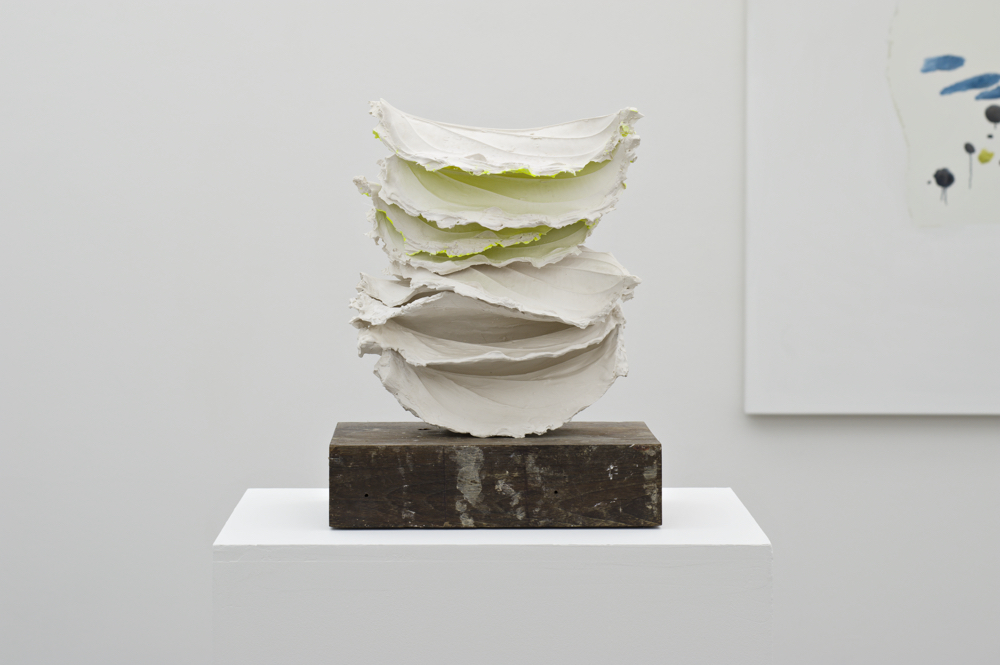Karin Suter
Dwelling On Matter
19.5. —
4.7.2010







Kunsthaus Baselland is happy to present Karin Suter’s (*1979, lives and works in Basel and Rotterdam) first institutional solo exhibition. Until 2004 Suter studied at the FHNW/HGK with Renée Levi and Jürg Stäuble and gained particular attention as a painter and illustrator.
For several years now, she has extended her work towards sculpture and installation. For the exhibition Dwelling on Matter (meaning in the physical or mental sense to linger or to reside in a matter or topic), the artist designed a kind of poetic landscape or rather a course consisting of different stands and sculptural entities. By doing so she traces one of the most important sculptural problems since Brancusi, namely the relationship between base and sculpture and respectively its relationship to the viewer. The higher an object is presented, the more influence, power and significance is in general visually attributed to it; the reverse effect arises from the use of a low base. By enhancing the number of objects and sculptures displayed on stands to a near-forest of pedestals and sculptures, she sidesteps those alleged equations and even the question of hierarchy. The stands Suter uses are of entirely different materialities: A stool can also be part of the base as one on two wooden blocks placed plank, whereby questioning whether any type of base can be plausibly exalted to be the medium of something ‘elevated’, or whether — as in the art of Brancusi — the entire arrangement becomes a sculpture entering into relation with the recipient.
The sculptures are created in part from further processed and found objects, or from objects found in nature. The horn of an animal, for example, is formally extended and changed. An almost dry leaf or a found bust is doused with or immersed in black epoxy, which in succession seals and conserves these respective structures in a highly glossy way. The traces of workmanship, the threads of the viscous resin and other spots of color are left visible — as matter has become form. Her recurrent repertoire of forms is based on geometric archetypes: circles, spheres, spirals, ellipses, squares or rectangles serve as modifiable archetypes gaining an extension.
Another issue taken up by the artist in her latest series of sculptures is the idea of balance. Based on the compositional ideas of painting, Karin Suter explores those positions where the relevant form barely stands or hangs at a certain point. In some sculptures — the artist refers to them as “precarious situations” — balance is manufactured by means of wedges or bricks; for example, a found, irregularly cut stump of a wild cherry tree is supported by a brick. The form, which could actually be a base, changes into a sculpture and leads the traditional base-sculpture-relationship ad absurdum.
Inspired by literary sources (Marianne Moore, Wallace Stevens, Daniel N. Tiffany, etc.) Suter recently became interested in automatons, machines, robots and clocks, which she incorporates in many sculptures formally and thematically. The control of the natural environment by means of technical reproduction and mimetic imitation is in the focus. The artist uses these questions to explore what art can ever be. Her installations, sculptures, drawings and paintings are to be understood as a conceptual, process-oriented experiment about the formal basic requirement of a medium and of presentation itself. They deal with abstraction and suggestion, alienation and symbolism, and sometimes even ornament and texture.
Text by Sabine Schaschl